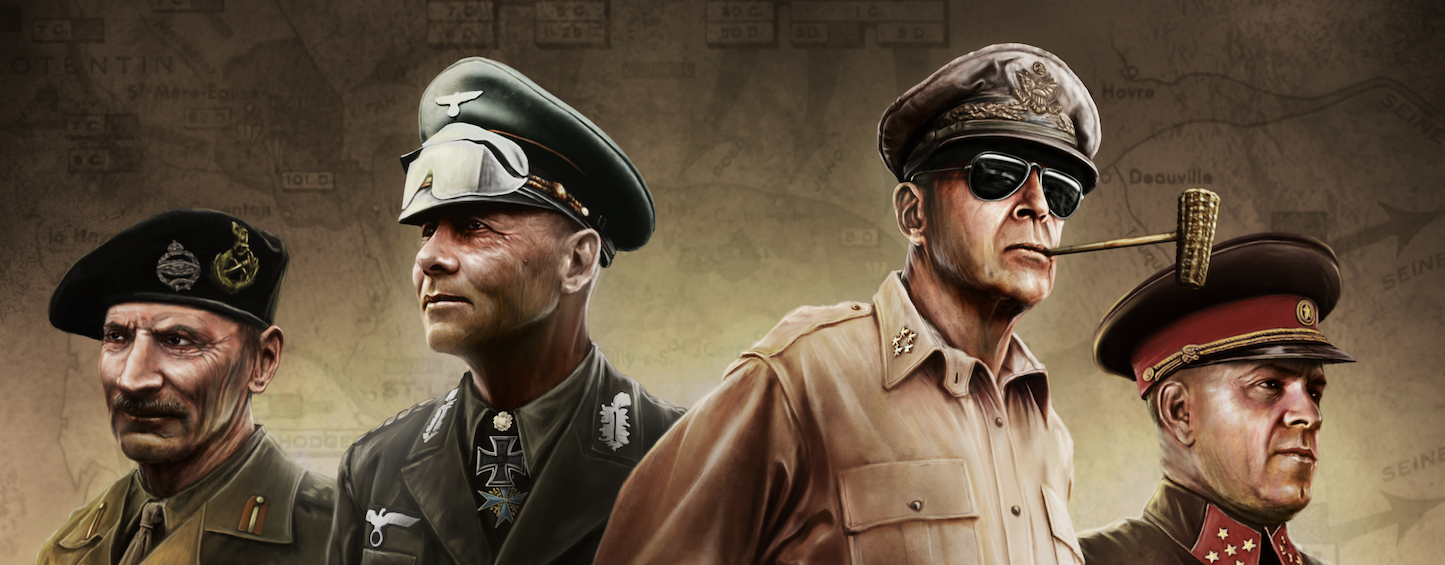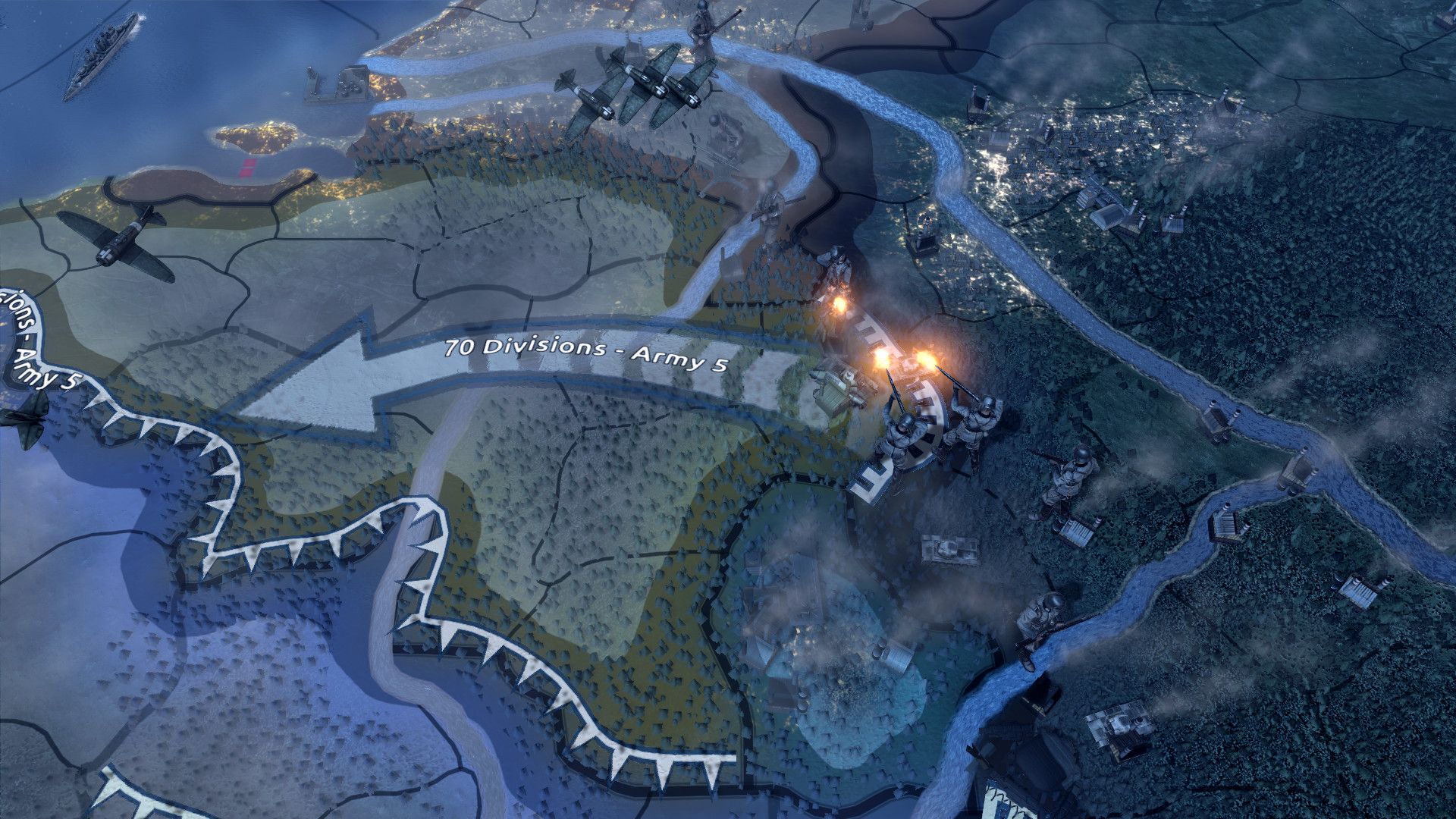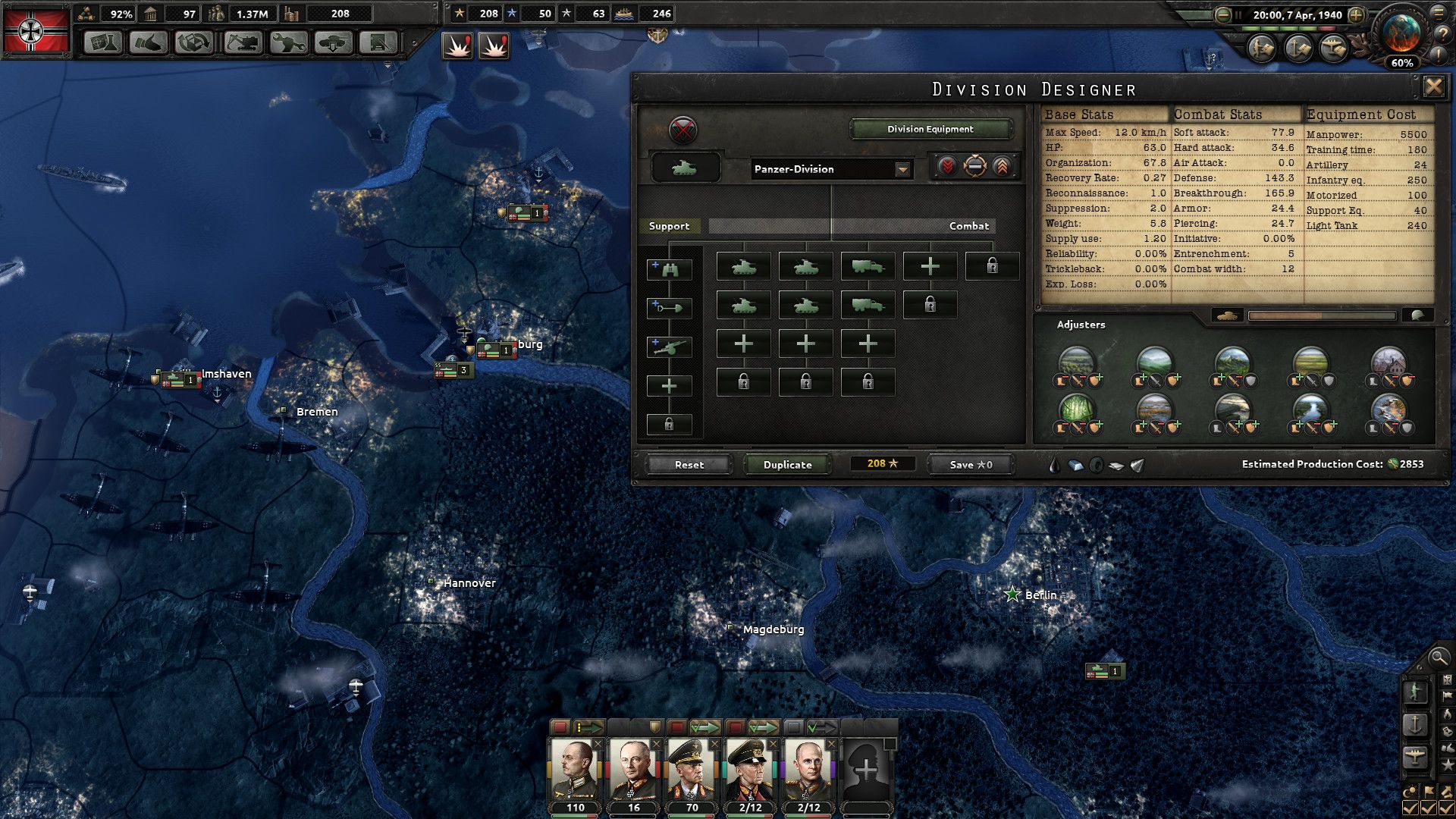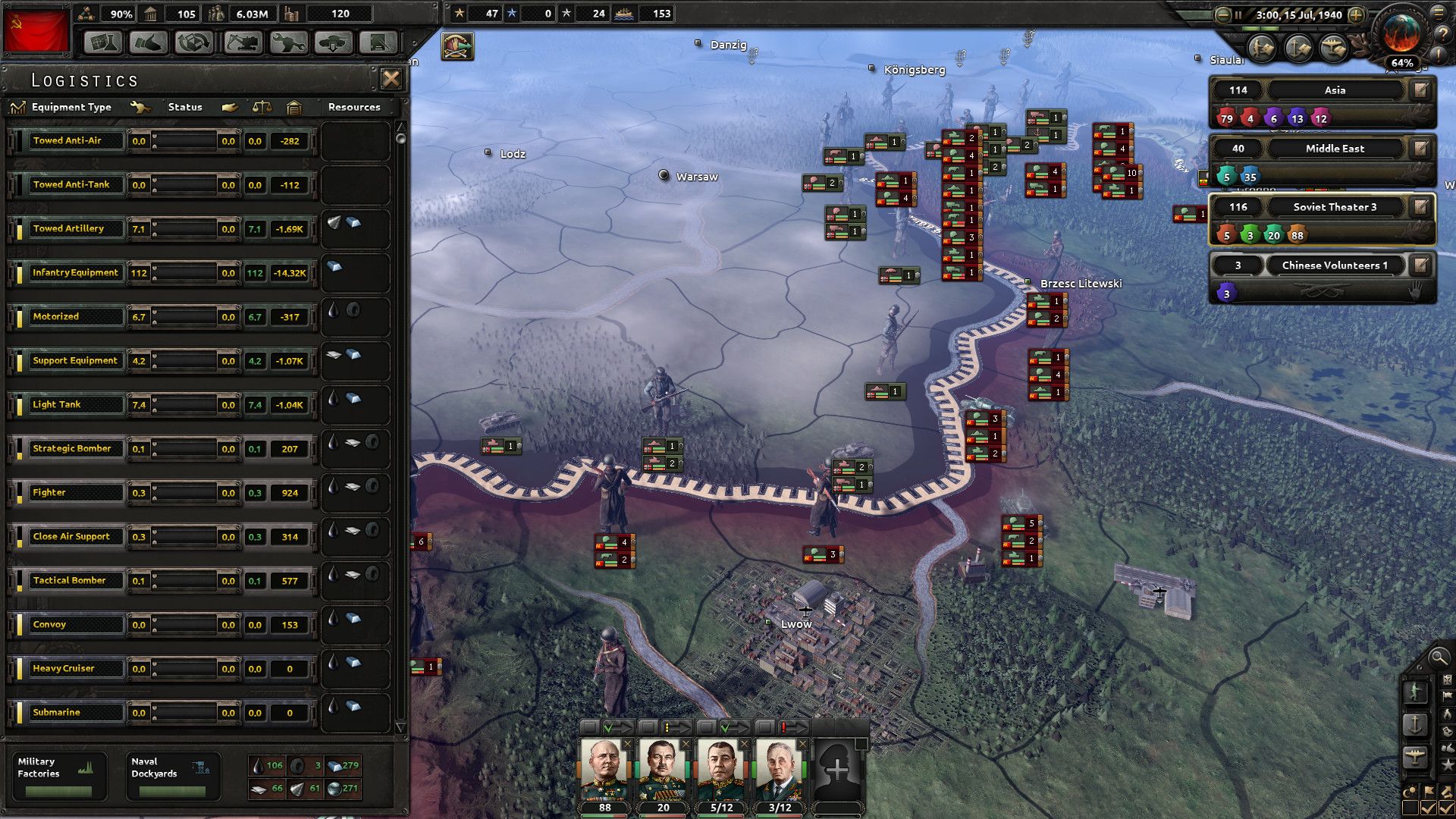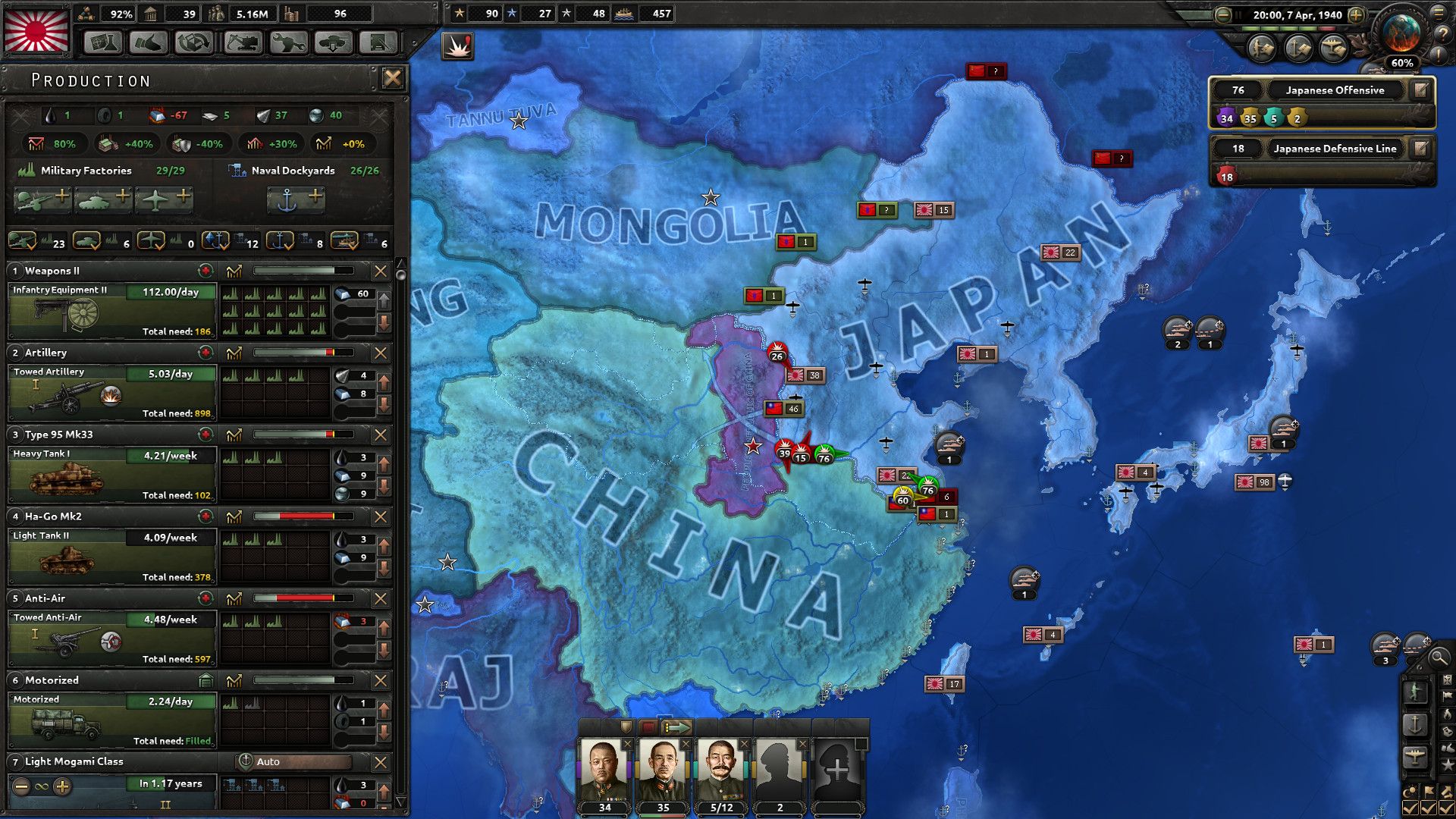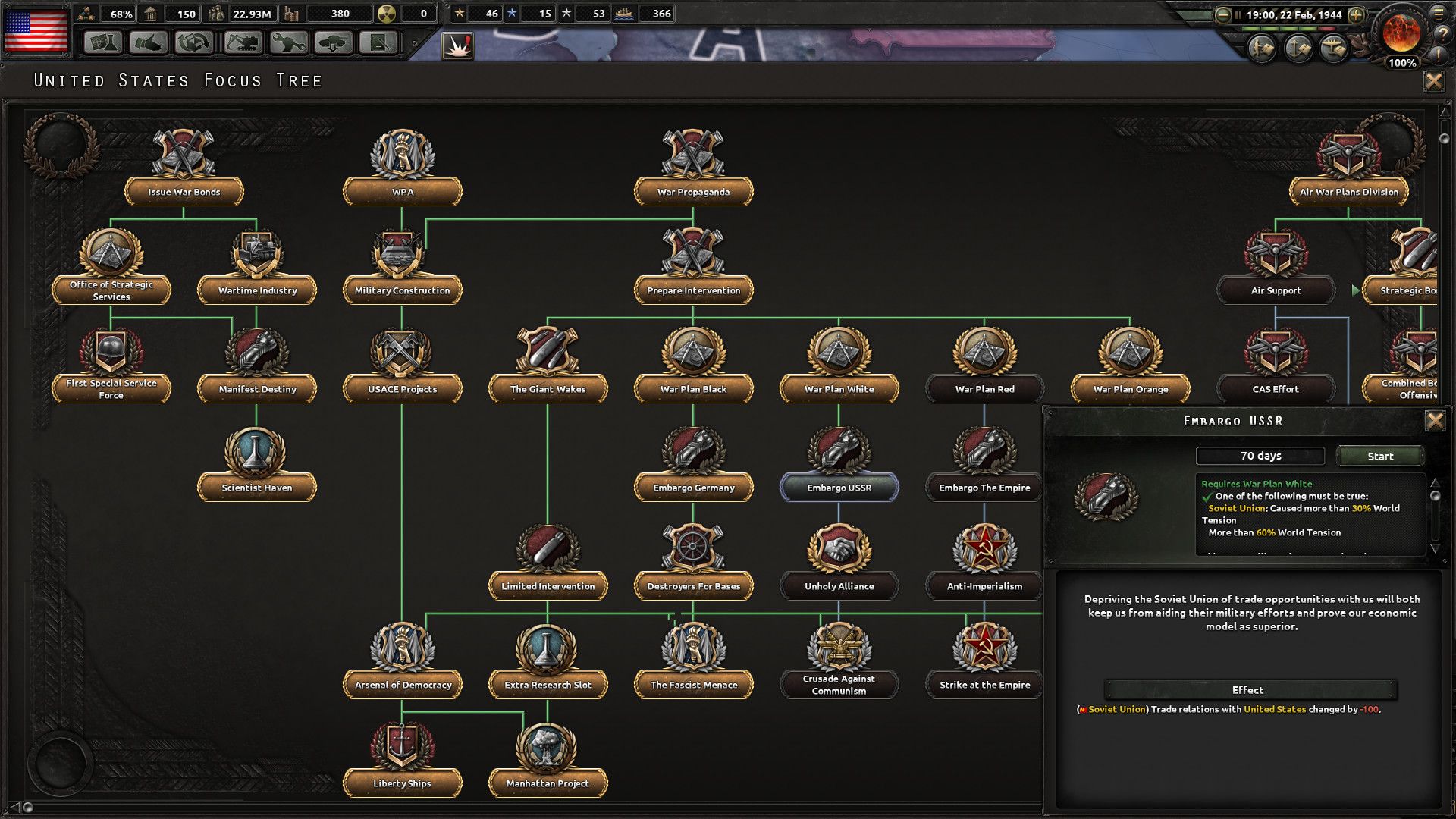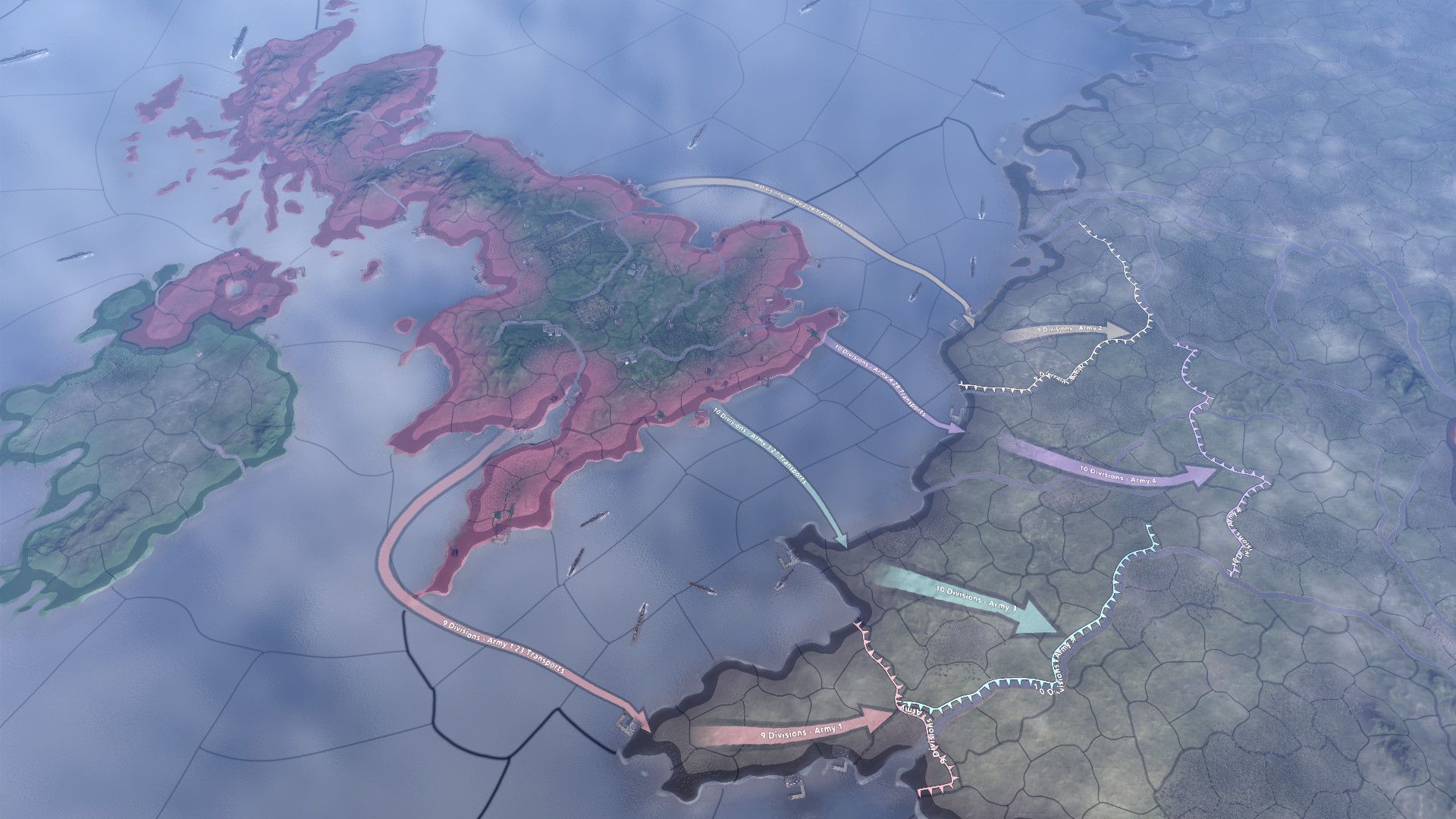Hearts of Iron IV is the most fun you'll have taking over the world. There’s nothing quite like sinking your first carrier, completing an encirclement, causing a superpower to capitulate or dropping the world’s first atomic bomb. All of these things are difficult, require massive investment and make you feel accomplished. Hearts of Iron IV, the latest game from Paradox, puts you into the head of someone fighting World War 2 and gives you a surprising number of options and opportunities for strategic thought. Want to try and ally with the USSR or invade them? Want to change your system of government entirely? Think early development of nukes would have changed everything? HoI4 gives you the ability to explore the grand strategy of World War 2 using Paradox’s “Clausewitz” engine for simulating global strategy and development. This game takes us masterfully through the revolutions in technology and strategy that occurred during the period (1936-1951+), from the wooden planes and trenches of the First World War through the technological revolution and grand strategy of Second World War to the world of missiles and A-bombs of the Cold War.
For those not familiar with Paradox’s games, you choose a country and play through a specific period of time (in this case WW2): training and positioning troops, declaring war, managing technological progress, developing economically, engaging in diplomacy, dealing with internal and external politics and so on. These games take place in real time, rather than the turn based system in Civilization. You and your opponents choose what you want to research, make plans, prepare invasions and order troops. Then, as the clock runs, all those things happen simultaneously. You can, of course, pause the game to think and issue large numbers of orders at crucial moments. Compared to their last game, Europa Universalis IV, there is a much heavier focus on troop management, warfare and technological development and less of a focus on diplomacy, mostly just because there are fewer countries and a shorter time period. Also, new players should be warned that there is a steep learning curve, with numerous systems to handle which all must be managed well in order to succeed.
`
A large part of how this game works involves making plans (like move the front line from here to there or garrison specific areas for defense and occupation) and having micromanaging AIs work out the specific details of moving around single divisions. Had this not been done exceptionally well, the game would have been absolutely broken, but they did a great job with this system and I let the AI handle most of the specifics in combat while I used my special reserve of elite units for breakthroughs and to attack especially well defended areas. Sometimes the micro AI doesn’t seem to work quite the way you’d like it to, but this occurs most often when you are asking it to manage a front as long as Africa. At first I thought the system was breaking down, and it was; the solution which makes sense both historically and for gameplay is to assign a few smaller fronts so that coordination can occur within those sectors and you don’t have divisions marching from one side of Africa to another. This planning and execution system makes for excellent strategic gameplay and nail-biting moments when your attack is finally ready to go and you see your troops begin to duke it out with the enemy. I even put together some very sophisticated attack strategies where I would assign certain types of units to specific armies designed to carry out one specific part of the plan. For example, I used my alpine units to attack France through the Alps and secure just enough territory so that my heavy armor could move in and exploit the breakthrough.
The factory system is good and makes sense both historically and for gameplay. You can build civilian factories, which produce more factories or can be basically rented out for resources from other countries, and military factories, which produce military equipment. You need to build as many civilian factories as possible because you will need them for both economic development and military production since you’re usually short certain resources. As your technology develops you’ll want to produce better tanks and guns, however, you lose productive efficiency and it takes time to get your output back up to its previous level.
World War 2 is an excellent setting for the Clausewitz engine to shine, but it’s also been heavily modified for this game. The game moves hour by hour and you can actually watch the light move across the globe that indicates day and night, and even the moon reflects off the ocean in an excellent graphical touch. Day and night affect combat and combat slows down at night. You can mitigate this for your side with a series of upgrades and technologies which can make your forces much more effective night fighters. The game has many different historical and strategic phases throughout as the level of technology changes. Radar completely changed how the air war worked. Rockets, jets, nukes had the same effect. This meant that the gameplay never got old, as there were always new challenges and situations to deal with. I also really like the way logistics work. Things take time and that makes sense. Big things, like a massive invasion of India, take months. Trade wars are excellent; cutting your opponents off from the essential resources of their empires and trading partners by controlling significant land and sea regions is complex, fun and makes sense historically.
HoI4 features the best technology tree, or should I say trees, I’ve ever seen. At any given moment there are more than a dozen different technologies you can research and you can also research multiple technologies at once. Technologies all have a year attached. You can research them ahead of time, but at a penalty. This all makes the player feel very much in control and makes perfect sense. The idea that your entire population is going to be researching theology, then once that’s done they will all research something else, like in Civilization, doesn’t really make much sense from a historical perspective. There has been much effort in recent 4x games to redesign the technology tree, usually into a technology wheel, but I find the HoI4 system to be far superior to anything I’ve seen in the past. There is also a special tech tree call “national focuses” which give you other bonuses and opportunities. For example, Germany can research national focuses which improve their industry or improve their missile or submarine research. Some of these are mutually exclusive, which makes sense (ally with or oppose the USSR). The only thing I wish you could do was change those things later as the situation changed but it still works really well as is.
The learning curve is significant but there is an awesome tutorial that helps you understand most of the systems and can take you right to the relevant wikis. I only wish it covered naval strategy because after the tutorial I felt that I had a good handle on everything else, but naval strategy was seemingly omitted. That said, during my first games I struggled with numerous systems which were not introduced by the tutorial but eventually made sense. It would usually go something like: “How do I get my volunteers home after sending them to the Spanish Civil War? Oh, wait for the war to end… I guess that makes sense.”
The opposing and allied AIs work together well except for a lack of transparency. Most of the time everything they do seems logical, but I would often observe strange behavior from the AIs, like massing around non-aligned countries without ever doing anything. If we had more of a window into what the AIs were thinking perhaps this behavior would be less confusing. Also, AI’s declare war seemingly at random. Perhaps there’s some sort of strategic calculus to this, but again, we need more transparency, otherwise the AI looks insane. I was playing as Italy, which is not the faction leader so maybe the experience is different when you play as Germany, but I couldn’t figure out how territory changed hands. It seemed as though territory would switch between allies at whim and often made no sense to me whatsoever. Eventually, who occupied what would start to make sense, but it can be weird for a while. It would also be very useful to get updates as to what your allies are planning (in a grand sense, like, we want to invade England) and what your enemies are thinking or at least saying publicly, maybe like speeches and stuff? This might be hard to do given just how many paths these wars can follow, but it would have been highly rewarding, interesting, and useful for the player. In general this game needs more flavor events. It has the Ehrhart and Hindenburg stuff, then it basically stops (at least for me as Italy, except for pilot promotions and causus belli generation). This is a major misstep. Come on, I took the Panama Canal, give me a congratulatory pop up or something! I later got one or two good pop up events, but that was it.
The game also has its frustrating moments. Building a rocket launch site at a location that couldn’t hit anything with seemingly no way to know this beforehand and then not having its rockets replaced with newer ones because it was filled with useless rockets is a flaw. When France fell, Vichy France stole territory I was occupying and had taken at great cost. I see there’s a national focus for this but it requires Germany to occupy Ile De France without France collapsing, but France collapses after Ile De France is occupied and I need time to complete the focus. It’s annoying to have to move people to port, then move them by sea once they get there. I like not having to manage individual transport craft, but sometimes it will have your units walk across the world rather than use them. Units sometimes seem to forget their orders. It would also have been great to have more map overlays for things like industrial amounts and politics.
There are a few key things I learned that made the game much less frustrating that you should keep in mind. Make sure to manage your supplies; when you see that your troops are low on supply, reposition them immediately. Remember to deploy your aircraft. Name your armies so that you can find them more quickly. You should also create different types of units as you develop new technologies. Lastly, I really wish there was an undo button, as you can make a mistake or click the wrong place and cause real problems for yourself. I often try to assign aircraft to a region but accidentally click an airbase which moves them, or accidentally delete a production line and lose all its efficiency. You can really mess yourself up by clicking in the wrong place in this game, so be careful.
HoI4 is a good tool for learning about the technology, strategy and historical figures of WW2, but not as much the human toll or the economics. It’s great that they used so many historical figures and corporations and you will be reading about them, especially early on, and it might make a good jumping off point for studying the war in detail. The game completely sanitizes WW2 besides a death toll record, which isn’t necessarily the place to show the horrific-looking fields of corpses which this represents. The game makes no mention of the holocaust which is just fine, there’s no place for it. The final solution cost Germany money, troops, political stability, etc. If it was a “national focus” in the game, you wouldn’t want to take it. There is, however, a place to talk about the German slave economy. Germany replaced as many of its workers with slaves as possible during WW2 to free up Germans for the front and expand its wartime economy. This should be in the game as slave economics was a large part of how fascism worked, particularly in the Third Reich. There is also no money in the game, which is a big part of how the allied economy worked in WW2. Allied governments in WW2 would simply issue purchase orders with money borrowed from the bond market and allow their free economies to figure out how and where the bullets and bombs would be produced, without creating so many bonds that their currencies collapsed. In fact, it seems that the economic system presented in the game is most appropriate for the Soviet Union where the government could choose where factories would be built and what they would produce. The way the economics of the war are modeled work well for gameplay, I just would have wanted a bit more options and some difference in how the economies worked in the different countries at the time, which is another missed opportunity.
HoI4 exhibits great performance with the very rare slowdown. There is significant replay value here as two different games of HoI4 are very unlikely to go the same way, at least from my experiences so far. Hopefully HoI4 gets the same kind of support that EU4 received, as if it does, it’s highly likely the product that we will end up with in even a year’s time will be vastly enhanced from the release version, even with just the free patch content.
Closing Comments:
Hearts of Iron IV is an easy recommendation for grand strategy fans of all ages and encourages them to take the time to figure everything out. There are some issues including the lack of popups, flavor events and opacity as to what the other AI players are trying to accomplish, but these things are rather small complaints in the grand scheme of things considering the overwhelming quality here. Hearts of Iron IV is the sort of game that requires real thought and that you’ll enjoy pondering even when you’re not playing it.

